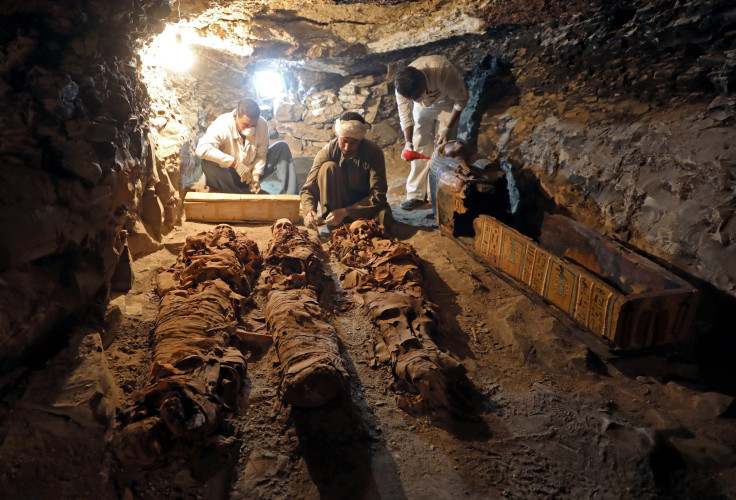2000-Year-Old Well-Preserved Mummy Discovered In Siberia

A group of archaeologists exploring a previously water covered region of southern Siberia discovered mummified remains of a young woman, one who belonged to the Hunnu culture and was probably a noble back in the day.
Unearthed from a burial site located on the bank of the Yenisei River, the mummy was dated to be nearly 2,000 years old, according to initial analysis. It is very well-preserved and accompanied with an ancient mirror and commodities related to a funerary ritual.
Normally, the shoreline of Yenisei River and the archaeological sites located there remain underwater due to the reservoir created by the massive Sayano-Shushenskaya Dam on the Yenisei. It powers the largest hydroelectric power plant in the country, but the reservoir also affects the analysis of the site.
The water levels go down only in the month of May-June, which gives archaeologists a short window to explore the site. This time the opportunity was not wasted because researchers from St. Petersburg’s Institute for the History of Material Culture spotted a rectangle-shaped stone grave and found the nearly intact mummy — the first to be discovered in the region — resting within it.
While three decades of reservoir water is more than enough to destroy a body, this one remained pretty well preserved due to the cover of the grave, which kept everything safe from the impact of the water.
“The lower part of the body is well-preserved,” Marina Kilunovskaya, the leader of the search, told TASS. “It is not a classical mummy, though. The grave remained tightly sealed under the stone cover all along. The body underwent natural mummification".
As a result, they were able to recover soft tissue samples, skin fragments, remains of clothing, and goods that were buried with the woman.
“On the mummy are what we believe to be silk clothes, a beaded belt with a jet buckle, apparently with a pattern,” Natalya Solovieva, the deputy director of the institute told the Siberian Times. "Near the head was found a round wooden box covered with birch-bark in which lay a Chinese mirror in a felt case.” They also found a pair of vessels with funerary meals.
As one of the two vessels and other ceramic utensils unearthed from the grave were typical of the ancient Hunnu funeral practices, the team posited that the woman was probably a young, highly regarded nomadic Hun.
The Hunnu people lived in northern China and southern Siberia at the end of the 3rd century BC. They migrated westwards after the collapse of their empire and mixed with locals. It is believed that the mummy and the accompanying artifacts, which have been removed from the grave for long-term preservation, will provide more insight into the history of this culture and the young noble woman in question.
© Copyright IBTimes 2024. All rights reserved.





















